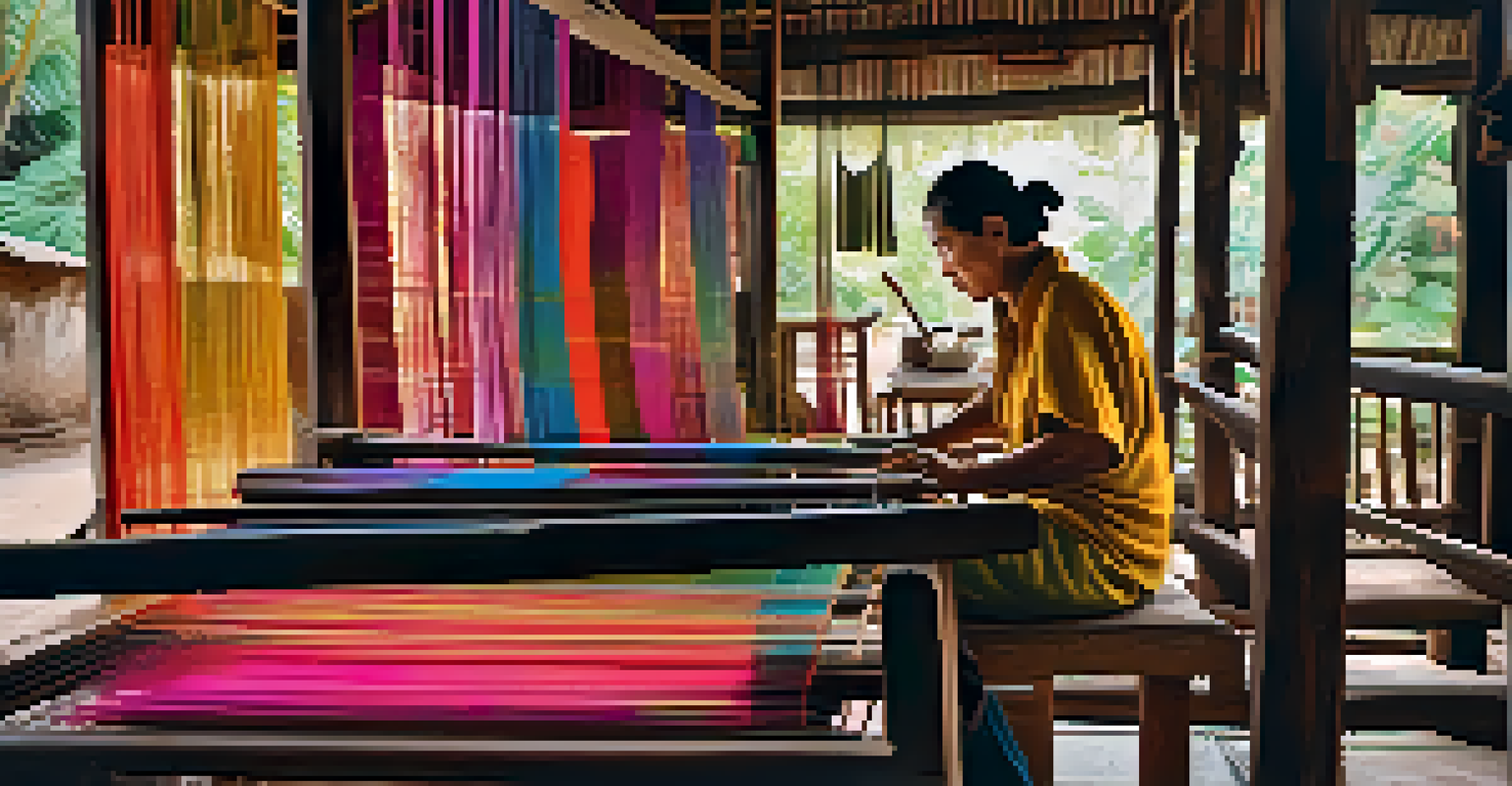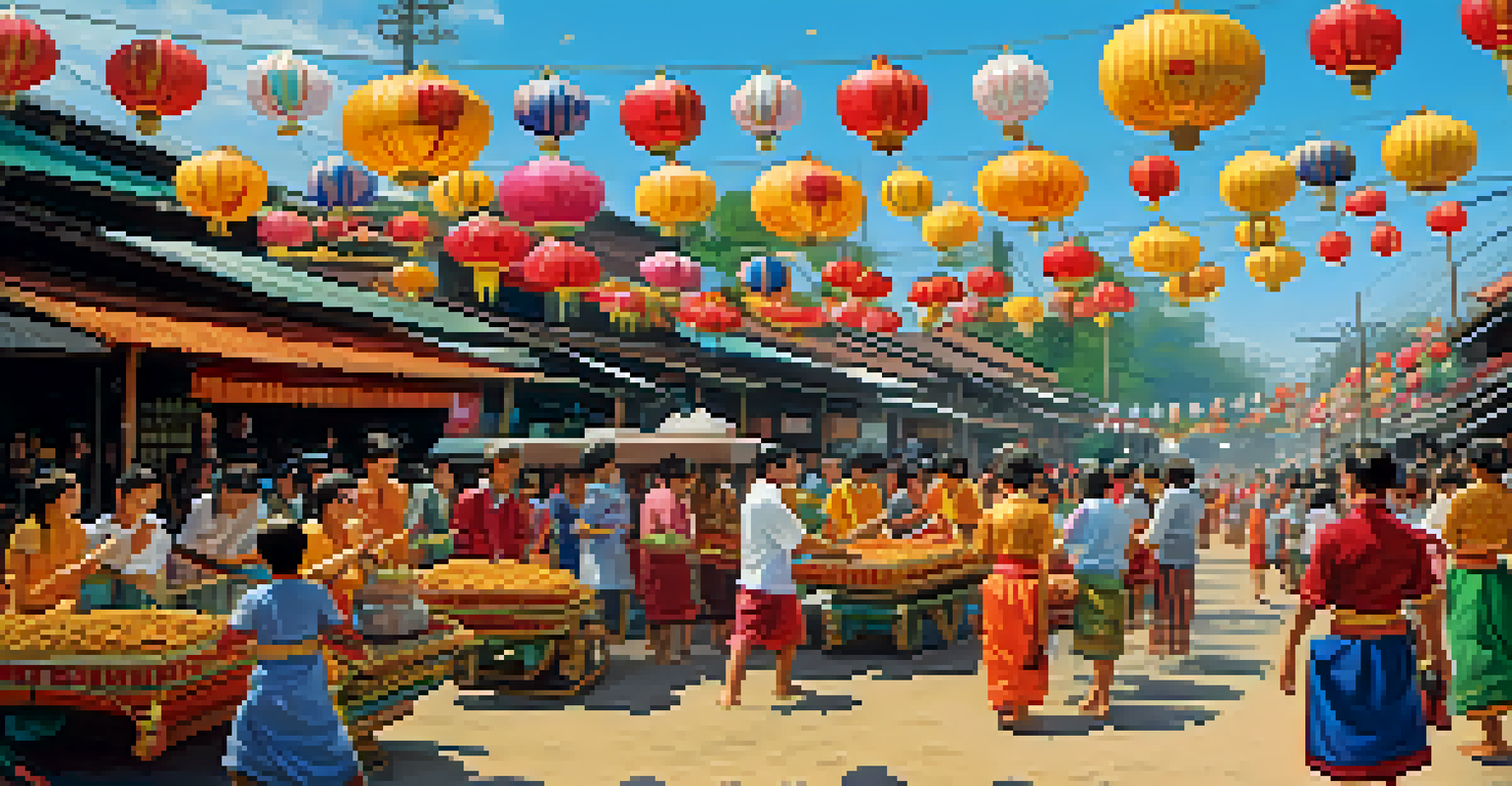Traditional Villages of Thailand: A Cultural Exploration

Understanding the Essence of Traditional Villages in Thailand
Thailand's traditional villages are vibrant tapestries woven from history, culture, and community. Each village tells a unique story, reflecting the local customs and way of life. These communities, often nestled in lush landscapes, offer a glimpse into the heart of Thai culture, where traditions have been preserved through generations.
Traveling – it leaves you speechless, then turns you into a storyteller.
In these villages, time seems to stand still, allowing visitors to experience the simplicity and beauty of rural life. From bustling markets to serene rice paddies, the charm of traditional living is palpable. The essence of these villages lies not just in their scenery but in the bonds formed between the people who call them home.
Moreover, these villages are often hubs of cultural exchange, where travelers can engage with locals, learn traditional crafts, and partake in age-old festivals. This connection to the past enriches the experience, making each visit an opportunity for deeper understanding and appreciation of Thai heritage.
The Role of Agriculture in Village Life
Agriculture is the backbone of many traditional Thai villages, shaping both the economy and lifestyle. Rice farming, for instance, is not just a means of sustenance; it's a cultural cornerstone that binds the community together. The rhythmic cycles of planting and harvesting create a shared experience that fosters unity among villagers.

Villagers often work as a team during harvest season, turning labor into a communal celebration. This cooperative spirit reflects the deep-rooted values of collaboration and mutual support prevalent in Thai culture. The land is revered, and the fruits of labor are shared, enhancing the sense of belonging.
Cultural Richness of Thai Villages
Traditional villages in Thailand are vibrant hubs of culture, showcasing unique customs, crafts, and community bonds.
Additionally, agricultural practices in these villages are often sustainable and mindful of nature. Traditional methods passed down through generations ensure that the land remains fertile and productive, showcasing a harmonious relationship between the villagers and their environment.
Traditional Crafts: A Window into Thai Heritage
Craftsmanship is a defining feature of Thailand's traditional villages, where skills are honed and passed down through generations. From intricate silk weaving to delicate pottery making, each craft tells a story of cultural significance and artistic expression. These crafts are not just livelihoods; they are embodiments of identity and heritage.
The best way to find yourself is to lose yourself in the service of others.
Visitors can often witness artisans at work, gaining insight into the meticulous processes behind each creation. Workshops invite tourists to learn these crafts firsthand, fostering appreciation and respect for the traditional skills that have stood the test of time. This hands-on experience connects people across cultures, bridging gaps through art.
Moreover, the sale of handcrafted goods supports local economies and helps sustain these traditional practices. When purchasing a handmade item, travelers are not just taking home a souvenir, but a piece of the village’s history and a story worth sharing.
Festivals and Celebrations in Traditional Villages
Festivals in Thailand's traditional villages are vibrant expressions of culture, celebrating everything from the harvest to local deities. These events are marked by colorful parades, traditional music, and dance that fill the air with joy and camaraderie. Participating in these festivities offers a unique glimpse into the heart of Thai community life.
Each festival often has its own significance and rituals, deeply rooted in local beliefs and customs. For instance, the Loy Krathong festival, where villagers float beautifully decorated baskets on water, symbolizes the release of negativity and a wish for good fortune. Such traditions not only strengthen community bonds but also invite visitors to engage and celebrate together.
Agriculture's Community Significance
Agriculture, particularly rice farming, plays a crucial role in Thai village life, fostering unity and sustainable practices among residents.
These occasions are perfect opportunities for travelers to immerse themselves in local culture, enjoying authentic food and experiencing the warmth of Thai hospitality. The sense of togetherness during these celebrations is contagious, leaving lasting memories for all who participate.
The Importance of Family and Community Ties
In traditional Thai villages, family and community are at the core of daily life, forming a supportive network that nurtures individuals. Elders are revered, and their wisdom guides the younger generations, ensuring that traditions and values are upheld. This intergenerational connection is key to maintaining the village's cultural identity.
Family gatherings are frequent, often centered around shared meals and communal activities. These moments not only strengthen familial bonds but also reinforce the village's collective spirit. The sense of belonging fosters a supportive environment where everyone looks out for one another, creating a tight-knit community.
Moreover, community events, such as village meetings or festivals, encourage participation and inclusivity. This strong sense of unity is a hallmark of village life, where everyone plays a role in nurturing the traditions and values that define their unique culture.
Exploring Local Cuisine: A Taste of Tradition
Food in Thailand's traditional villages is more than just sustenance; it's a celebration of local flavors and culinary heritage. Meals are often prepared using fresh, locally sourced ingredients, reflecting the rich biodiversity of the region. Each dish tells a story, rooted in the village's history and cultural practices.
Visitors can savor iconic Thai dishes, such as 'Som Tum' (papaya salad) or 'Khao Soi' (curry noodles), often prepared in traditional ways. These meals are typically enjoyed in a communal setting, emphasizing the importance of sharing and connection. The experience of enjoying food together fosters a sense of community among locals and visitors alike.
Sustainable Tourism's Vital Role
Sustainable tourism is essential for preserving the cultural identity of traditional villages while providing economic benefits to local communities.
Additionally, cooking classes in these villages provide an opportunity to learn about the ingredients and techniques that define Thai cuisine. This culinary journey not only tantalizes the taste buds but also deepens understanding of the cultural significance behind each dish.
Sustainable Tourism: Supporting Traditional Villages
As tourism grows, traditional villages in Thailand face the challenge of balancing preservation with development. Sustainable tourism practices are essential to ensure that these communities thrive without losing their cultural identity. This approach involves respecting local customs while providing economic benefits to villagers.
Travelers can support sustainable tourism by choosing eco-friendly accommodations, participating in community-led tours, and buying local handicrafts. When visitors engage with villagers in meaningful ways, they contribute to the preservation of traditions and the well-being of the community. It's a win-win situation that benefits both travelers and locals.

Moreover, raising awareness about the importance of preserving cultural heritage is vital. By sharing their experiences, travelers can help promote the beauty of traditional villages, encouraging others to visit responsibly and appreciate the rich tapestry of Thai culture.